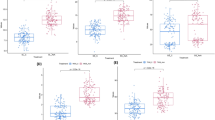Abstract
Salinity stress is a major limiting factor in cereal productivity. Many studies report improvements in salt tolerance using model plants, such as Arabidopsis thaliana or standard varieties of rice, e.g., the japonica rice cultivar Nipponbare. However, there are few reports on the enhancement of salt tolerance in local rice cultivars. In this work, we used the indica rice (Oryza sativa) cultivar BR5, which is a local cultivar in Bangladesh. To improve salt tolerance in BR5, we introduced the Escherichia coli catalase gene, katE. We integrated the katE gene into BR5 plants using an Agrobacterium tumefaciens-mediated method. The introduced katE gene was actively expressed in the transgenic BR5 rice plants, and catalase activity in T1 and T2 transgenic rice was approximately 150% higher than in nontransgenic plants. Under NaCl stress conditions, the transgenic rice plants exhibited high tolerance compared with nontransgenic rice plants. T2 transgenic plants survived in a 200 mM NaCl solution for 2 weeks, whereas nontransgenic plants were scorched after 4 days soaking in the same NaCl solution. Our results indicate that the katE gene can confer salt tolerance to BR5 rice plants. Enhancement of salt tolerance in a local rice cultivar, such as BR5, will provide a powerful and useful tool for overcoming food shortage problems.





Similar content being viewed by others
References
Abei H (1984) Catalase in vitro. Methods Enzymol 105:121–126
Asada K (1992) Ascorbate peroxidase, a hydrogen peroxide scavenging-enzyme in plants. Plant Physiol 85:235–241
Bowler C, Van Montagu M, Inze D (1991) Manganese superoxide dismutase can reduce cellular damage mediated by oxygen radicals in transgenic plants. EMBO J 10:1723–1732
Boyer JS (1982) Plant productivity and environment. Science 218:443–448
Doyle JJ, Doyle LL (1990) Isolation of plant DNA from fresh tissue. Focus 12:13–15
Flowers TJ (2004) Improving crop salt tolerance. J Exp Bot 55:396 307–319
Hiei Y, Ohta S, Komari T, Kumashiro T (1994) Efficient transformation of rice (Oryza sativa L.) mediated by Agrobacterium tumefaciens and sequence analysis of the boundaries of the T-DNA. Plant J 6:271–282
Kaku N, Hibino T, Tanaka Y, Ishikawa H, Araki E, Takabe T, Takabe T (2000) Effects of overexpression of Escherichia coli katE and bet genes on the tolerance for salt stress in a freshwater cyanobacterium Synechococcus sp. PCC 7942. Plant Sci 159:281–288
Ma X, Qian Q, Zhu D (2005) Expression of a calcineurin gene improves salt stress tolerance in transgenic rice. Plant Mol Biol 58(4):483–495
McClung CR (1997) Regulation of catalase in Arabidopsis. Free Radic Biol Med 23:489–496
Mitsuhara I, Ugaki M, Hirochika H, Ohsima M, Murakami T, Gotoh Y, Katayose Y (1996) Efficient promoter cassettes for enhanced expression of foreign genes in dicotyledonous and monocotyledonous plants. Plant Cell Physiol 37:49–59
Mittler R (2002) Oxidative stress, antioxidants and stress tolerance. Trends Plant Sci 7:405–410
Miyagawa Y, Tamoi M, Shigeoka S (2000) Evaluation of the defense system in chloroplasts to photooxidative stress caused by paraquat using transgenic tobacco plants expressing catalase from Escherichia coli. Plant Cell Physiol 41:311–320
Ngo TT, Lenhoff HM (1980) A sensitive and versatile chromogenic assay for peroxidase-coupled reactions. Anal Biochem 105:389–397
Nagamiya K, Motohashi T, Nakao K, Prodhan SH, Hattori E, Hirose S, Ozawa K, Ohkawa Y, Takabe T, Takabe T, Komamine A (2007) Enhancement of salt tolerance in transgenic rice expressing an Escherichia coli catalase gene, katE. Plant Biotechnol Rep 1(1):49–55
Ossowski I, Mulvey MR, Leco PA, Borys A, Loewen PC (1991) Nucleotide sequence of Escherichia coli katE, which encodes catalase HPІІ. J Bacteriol 173:514–520
Roy M, Wu R (2001) Arginine decarboxylase transgene expression and analysis of environmental stress tolerance in transgenic rice. Plant Sci 160(5):869–875
Sen Gupta A, Webb RP, Holaday AS, Allen RD (1993) Overexpression of superoxide dismutase protects plants oxidative stress. Plant Physiol 103:1067–1073
Shigeoka S, Ishikawa T, Tamoi M, Miyagawa Y, Takeda T, Yabuta Y, Yoshimura K (2002) Regulation and function of ascorbate peroxidase isoenzymes. J Exp Bot 53:1305–1319
Shikanai T, Takeda T, Yamauchi H, Sano S, Tomizawa K, Yokota A, Shigeoka S (1998) Inhibition of ascorbate peroxidase under oxidative stress in tobacco having bacterial catalase in chloroplast. FEBS Lett 428:47–52
Takeda T, Yokota A, Shigeoka S (1995) Resistance of photosynthesis to hydrogen peroxide in algae. Plant Cell Physiol 36:1089–1095
Willekens H, Chamnongpol S, Davey M, Schraudner M, Langebartels C, M Montagu, Inze D, Camp WV (1997) Catalase is a sink for H2O2 and is indispensable for stress defence in C3 plants. EMBO J 16(16):4806–4816
Yamane K, Rahman SM, Kawasaki M, Taniguchi M, Miyake H (2004) Pretreatment with antioxidants decreases the effects of salt stress on chloroplast ultrastructure in rice leaf segments (Oryza sativa L.). Plant Prod Sci 7:292–300
Zeba IS, Salam MA (2000) Growing rice in saline soils: biotechnological approaches for Bangladesh. In: The biotechnology directory. Macmillan, New York
Acknowledgments
We thank Prof. Tetsuko Takabe, Nagoya University, Nagoya, Japan and Prof. Teruhiro Takabe, Meijo University, Nagoya, Japan for providing pAMkatE72. We also thank Dr Sakiko Hirose, Dr Kenjiro Ozawa, Dr Yasunobu Ohkawa, National Institute of Agrobiological Sciences, Tsukuba, Japan for technical advice.
Author information
Authors and Affiliations
Corresponding author
Rights and permissions
About this article
Cite this article
Moriwaki, T., Yamamoto, Y., Aida, T. et al. Overexpression of the Escherichia coli catalase gene, katE, enhances tolerance to salinity stress in the transgenic indica rice cultivar, BR5. Plant Biotechnol Rep 2, 41–46 (2008). https://doi.org/10.1007/s11816-008-0046-7
Received:
Accepted:
Published:
Issue Date:
DOI: https://doi.org/10.1007/s11816-008-0046-7




